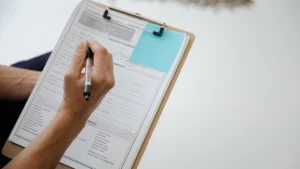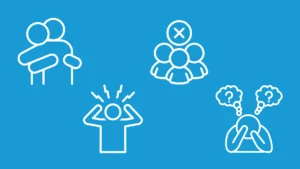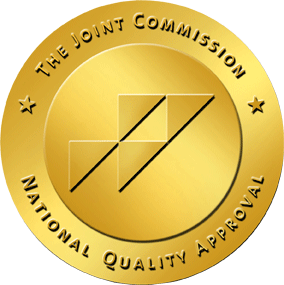If you have an anxious attachment style, you might find yourself constantly worrying about being rejected or not being good enough in relationships.
Addiction can sneak in when you use these substances to fill the emptiness or manage the anxiety that comes with your attachment style.
This post explores what this attachment style is, its variations, and how this attachment style can contribute to substance use disorders (SUD). By understanding how your attachment patterns influence your behavior, you can take steps towards healing and building healthier relationships.

What Is Anxious Attachment Style?
Anxious attachment is a type of attachment style. It usually starts in childhood. If your parent or caregiver was sometimes loving but other times distant, confusing, or unavailable, you may have grown up feeling unsure about how love works. This back-and-forth behavior is what often causes anxious attachment to form.
When you’re not sure if someone will be there for you, you may begin to fear being left out, ignored, or abandoned. That fear can follow you into adult relationships – with friends, partners, and even coworkers.
Signs You May Have an Anxious Attachment Style:
- You often worry if someone really loves you or will leave you.
- You need a lot of reassurance in relationships.
- You may overthink texts, calls, or long silences.
- You feel very upset when someone pulls away, even a little.
- You might try hard to please others so they won’t leave.
- You feel insecure without constant closeness or contact.
- You may feel like you’re “too much” or “not enough” at the same time.
If these signs feel familiar, know you’re not alone. Anxious attachment can feel exhausting, but you can work through it.
Variations of Anxious Attachment Style
You might be surprised to learn that there’s more than one kind of anxious attachment. Even though all anxious types tend to fear being left out or unloved, how you react to those feelings can look different.
Researchers talk about two main types: anxious-ambivalent and anxious-avoidant.1
Anxious-Ambivalent Attachment
If you have this style, you might feel like you’re stuck in a tug-of-war. You want to be close to someone, but at the same time, you might feel unsure if they care about you. You may feel clingy, needy, or jealous – even if the other person hasn’t done anything wrong.
You might say things like:
- “Why didn’t they text me back yet?”
- “What if they don’t love me as much as I love them?”
- “I need to fix this right now, or they’ll leave.”
Your emotions can feel intense and hard to control, especially when you’re afraid someone might pull away.
Anxious-Avoidant Attachment
This one can be a little confusing. You still feel anxious deep down, but instead of showing it, you pull away. You may avoid closeness or try to act like you don’t care, even though you do.
You might say things like:
- “I don’t need anyone.”
- “Getting close just leads to pain.”
- “I’m better off alone, anyway.”
You may look calm on the outside, but inside, you might be hurting or scared to trust people fully.
Both styles come from wanting connection and people-pleasing. This anxiousness can have a big impact on adult relationships. Once you understand your pattern, you can start changing it.
How Anxious Attachment and Addiction Intersect
When you have an anxious attachment style, you may carry a lot of emotional pain. You might feel scared of being left, worried you’re not good enough, or always afraid of losing love. These feelings can be heavy, and sometimes, you just want to make them stop.
That’s where addiction can come in. You might turn to alcohol, drugs, food, or even certain habits like shopping or overworking to numb the pain or quiet your anxiety. These things may seem to help at first, but over time, they can make things worse.
You might use substances to:
- Calm your racing thoughts
- Feel more confident in social situations
- Cope after a fight or breakup
Studies also show that sadness, anger, and attachment anxiety can all raise your risk of addiction. But they don’t work the same way.2
- Anger can push you straight into addictive behavior. It might make you act quickly, without thinking, just to find relief.
- Sadness works differently. It increases your anxiety about attachment, which then makes you more likely to turn to addiction for comfort.
But here’s the truth: it’s not your fault. You learned to survive the best way you could. Once you see the connection between your attachment style and your coping habits, you can start making changes. You can heal, grow, and find new ways to feel safe without needing to escape.
Breaking the Cycle With Treatment and Support
You don’t have to stay stuck in this cycle. You can work towards building a secure attachment style in your relationships. It’s not easy, but with the right strategies, you can make progress.
- Address your emotional patterns: Start by understanding your anxious attachment style. What triggers your fears of abandonment or rejection? Being aware of these patterns can help you change them.
- Communicate openly: Let your friends, family, partner, or coworkers know how you’re feeling, especially when you’re scared or anxious. Honest conversations can help create trust and understanding.
- Practice self-soothing: When anxiety kicks in, find healthy ways to calm yourself down, like deep breathing, journaling, yoga, or taking a break.
- Set healthy boundaries: Learning to respect both your needs and other people’s needs can create balance and prevent codependency.
If you’re curious about your own attachment style, you can explore it here: What Attachment Style Am I?.
Remember, breaking the cycle of anxious attachment takes time and effort.
At OceanRock Health, we focus on helping you understand your anxious attachment style and support you through the process of building healthier, more secure relationships. With the right help and support, you can break free from the patterns holding you back.

Sources:
- Ainsworth, M. D. S., & Bell, S. M. (1970). Attachment, exploration, and separation: Illustrated by the behavior of one-year-olds in a strange situation. Child Development, 41(1), 49–67. https://www.jstor.org/stable/1127388?origin=crossref
- Jürgen Fuchshuber, Andres, D., Prandstätter, T., Roithmeier, L., Schmautz, B., Schwerdtfeger, A., & Human-Friedrich Unterrainer. (2024). Influence of anxious attachment on the relationship between primary emotions and substance-related addictive behaviors. Frontiers in Public Health, 12. https://www.frontiersin.org/journals/public-health/articles/10.3389/fpubh.2024.1380539/full









